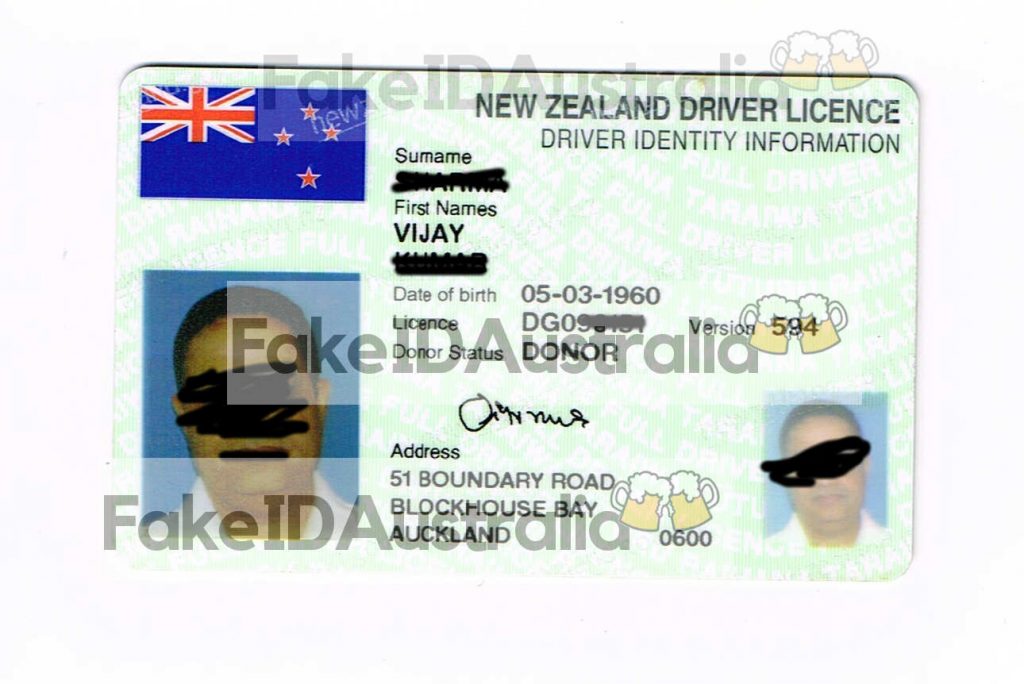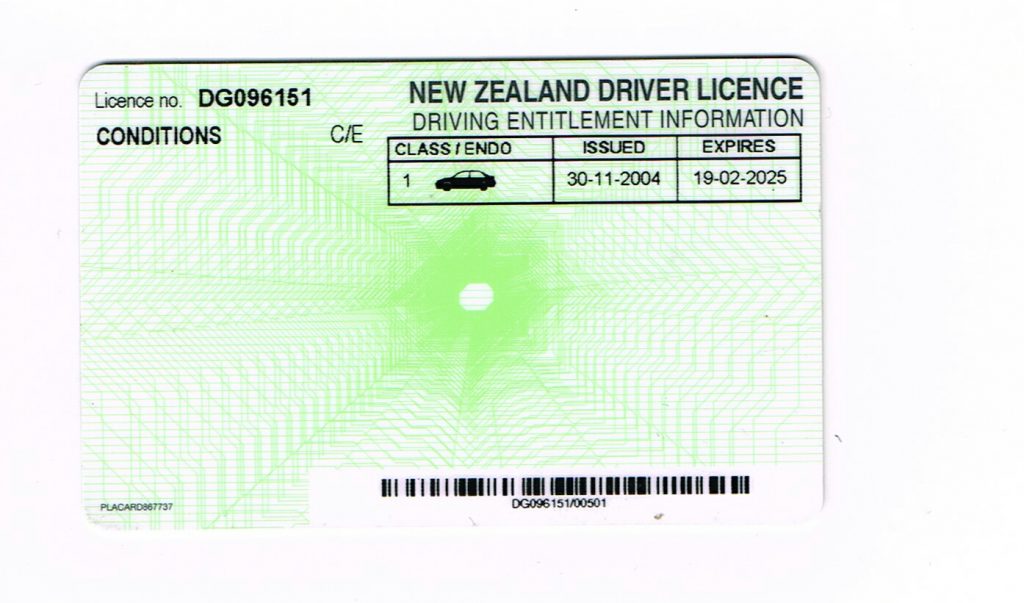Update: Do you want a free NZ ID? Simply join our payments team and you'll get 1 free licence every month! Contact us to find out more


THIS CARD IS A 100% REPLICA OF THE REAL NEW ZEALAND DRIVERS LICENSE. HAS BEEN TESTED ON NORTH AND SOUTH ISLAND AND HAS SCANNED EVERY TIME
New Zealand is a peaceful, secluded island nation of close to 5 million people, located in the southwest Pacific Ocean. The rugged, untouched nature of the New Zealand landscape has made the country an extremely popular tourist destination. As such, entertainment and nightlife goes hand in hand for locals and tourists alike at many destinations around the country. New Zealand is made up of hundreds of islands but features two main islands, the North Island (Te Ika-a-Måui), and the South Island (Te Waipounamu).
The North Island
The North Island of New Zealand is the world’s 14th largest island and holds around 75% of New Zealand’s population. The island features twelve main urban centres and includes the nation’s capital, Wellington, and the country’s largest city, Auckland. As such, the North Island is a hub of activity, and these main cities are a central attraction for entertainment. Furthermore, the North Island is home to some of New Zealand’s most popular holiday destinations including Mount Maunganui, Gisborne, the Coromandel Peninsula and the Bay of Islands. Over the summer months, tourists and locals flock to these destinations. A swell in population creates a bustling holiday vibe and exciting nightlife that attracts young and old holidaymakers from within New Zealand and around the globe.
North Island Nightlife
Nightlife in the North Island is very diverse and caters to everybody’s needs. The obvious starting point is Auckland, which features the waterfront bars in the Viaduct Harbour, creative nightlife in the nearby Briotmart and the famous Ponsonby Road, which is extremely popular with the younger crowd. The nation’s capital, Wellington, has a bohemian, eclectic nightlife feel and the condensed nature of the city means that all entertainment is within walking distance the central city. Courtenay Place Is always rocking to the small hours of the morning, whilst Cuba Street offers more refined entertainment choices. Apart from the main centres, nightlife in the North Island revolves around rural pubs and these local watering holes are often the heartbeat of small communities. Popular holiday hotspots such as Mount Maunganui, Gisborne and the Coromandel hold festivals and events, which provide an entertaining environment for drinking over the holiday period. These holiday destinations often enforce extensive drinking bans in public places to ensure safety and to cope with a large influx of people. There is a concerted effort to ensure that plenty of entertainment is provided to underage people to minimise the potential impact of underage drinking on health and protection services in these small towns. Resources are often stretched to the limit during the summer months.
Fake identification use in the North Island
The drinking age in the North Island, as in the rest of New Zealand, is 18 years of age. The age for entering casinos is 20 years of age. Without valid identification you will not be permitted to enter the premises, even if you were not purchasing alcohol. Valid identification in New Zealand to enter bars and restaurants is restricted to the following:
- A current Passport
- A Hospitality New Zealand 18+ Card
- A New Zealand Driver’s Licence
Because of the strict rules, there are frequent incidents of teenagers and foreign travellers trying to bend the rules by using fake identification. There have been instances of high school students altering driver’s licenses so that underage students could enter bars and clubs, particularly in the densely populated city of Auckland. Furthermore, free software online, such as Adobe Photoshop, has seen the increase of fake identification cards to alter 18+ cards and New Zealand Driver’s Licences. Teenagers in the Waikato region have been using these altered identifications to purchase alcohol from supermarkets and liquor stores.
In Wellington, there have been instances of students creating fake identifications that are so realistic that they could be used to drive cars. Licenced premises are finding it increasingly difficult to spot the fake licences and in some instances are using ultraviolet lights to try and spot irregularities. The authorities have noted that the development in technology has made it easier for fraudsters to produce realistic fraudulent identification documents.
The South Island
The South Island of New Zealand is the larger of the two main islands but is less densely populated. It only holds 25% of the nation’s population and is the world’s 12th largest island land mass. The South Island is popular worldwide for its remarkable scenery and adventure tourism. The Southern Alps mountain range provides an amazing backdrop, creating hundreds of beautiful lakes, rivers and a variety of landscapes. It is this serene setting that attracts millions of people to the region each year. Christchurch is the largest city in the Island and is the main centre for business and trade. Queenstown and Wanaka, both located in the Southern Lakes District are tourist hotspots and are well known as the adventure capital of the world. Dunedin is a popular student city, whilst Nelson is a trendy tourist destination at the top of the South Island, famous for its temperate climate.
South Island Nightlife
After the 2011 earthquakes that rocked Christchurch, the city has seen a rejuvenation of its nightlife. Countless bars and clubs have opened in the central city and this number is set to skyrocket as the rebuild reaches a peak in the next few years. The famous Oxford Terrace ‘strip’ of bars and clubs is now open, attracting young partygoers back to the area. Queenstown has a reputation as the party capital of New Zealand with a high number of tourists in the area. There are regular pub and bar crawls, as well as two casinos that result in vibrant nightlife every night of the week. During the ski season, Winterfest is a particularly popular week. Dunedin, the student town, is home to Otago University and has a reputation as a student party city. Students frequently pack bars and clubs situated near the Octagon in the CBD, whilst the annual Hyde street party always attracts thousands of students. Meanwhile Nelson, as an exciting holiday destination, sees a great influx of people during the summer months and this has the effect of exponentially increasing the liveliness of the nightlife over this period.
Fake Identification use in the South Island
In Queenstown, there have been several instances of underage people using the identities of lookalikes and older siblings to try and gain access into drinking establishments. Local teenagers and international students were also frequently caught out superimposing photographs onto different forms of identification. Bar staff have been trained by local police at Drink Safe Workshops, to help staff correctly identify forged and false identification documents.
In Dunedin, underage students have been caught scratching and marking valid forms of identification to change their birthdays to try and get into bars and clubs a lot sooner than legally allowed. There have been instances of using corrective pens to change dates, as well as complete digital duplications. The South Island’s largest city, Christchurch, has seen frequent several underage forgery charges laid against minors for producing fake identifications and selling them on the black market for a handy profit to other underage teens. Teens have been caught manufacturing fake identifications and whilst there has been a crackdown by the local authorities there are still a number of fraudulent identification cards in circulation.
Features of identification cards/ driver’s licences in New Zealand
To ensure the integrity of identification, the New Zealand Government have consistently changed how identification cards are issued. Furthermore, local authorities are consistently holding workshops and safety seminars all around the country to ensure licenced premises remain up to date to combat the latest in the fraudulent use of identification cards.
New Zealand driver’s licence card identity information is shown on the front of the card, making it easier for documentation purposes. At the end of 2014, the current rules regarding driver’s licences were introduced.
On the front of an identification card in New Zealand you will find the following written information:
Driver Identity Information Label
Surname
First Names
Date of Birth
Licence number
Donor status
Address
Version Number
As well as the written information, the most important distinguishing safety feature of the licence card is the profile photo and the profile photo watermark (found at the bottom right hand corner of the licence). The shift of the watermark photo in the latest set of rules was implemented to combat instances of fraud. The watermark photo is now easily identifiable and the stand-alone position it now holds on the card makes it harder for fraudsters to duplicate. Furthermore, the card has a newzealand.govt.nz watermark logo that is prominently displayed several times on either side of the identification. This makes it harder for replication and helps distinguish genuine New Zealand driver’s licences.
New Zealand 18+ Cards are Evidence of Age Documents produced under the watchful eye of the New Zealand Government, specifically Hospitality New Zealand, and are issued in accordance with the Sale and Supply of Alcohol Act 2012. The Evidence of Age document contains the following written information:
Evidence of Age Document label
Full Name
Date of Birth
Date of Expiration
As with the New Zealand Driver’s Licence, the 18+ Card holds both an identification profile photo and a stand-alone watermark image of the profile photo that is hard to copy. This feature is a new introduction bought in to help combat fraud.
The reasoning behind this change is that the technology needed to copy these watermark images now has to be relatively sophisticated. Given that most of the offenders for the production of fake identification cards in New Zealand are teenagers, strategically placing these watermarks on the identification cards places forgery out of their reach. The costs of duplicating these watermarks are too high for many offenders. However, as technology continues to evolve fraudsters will find new ways around these barriers. As such, the New Zealand Government continue to monitor the situation and have expressed their willingness to change their technology, if necessary, to maintain the integrity of all forms of legal identification.
